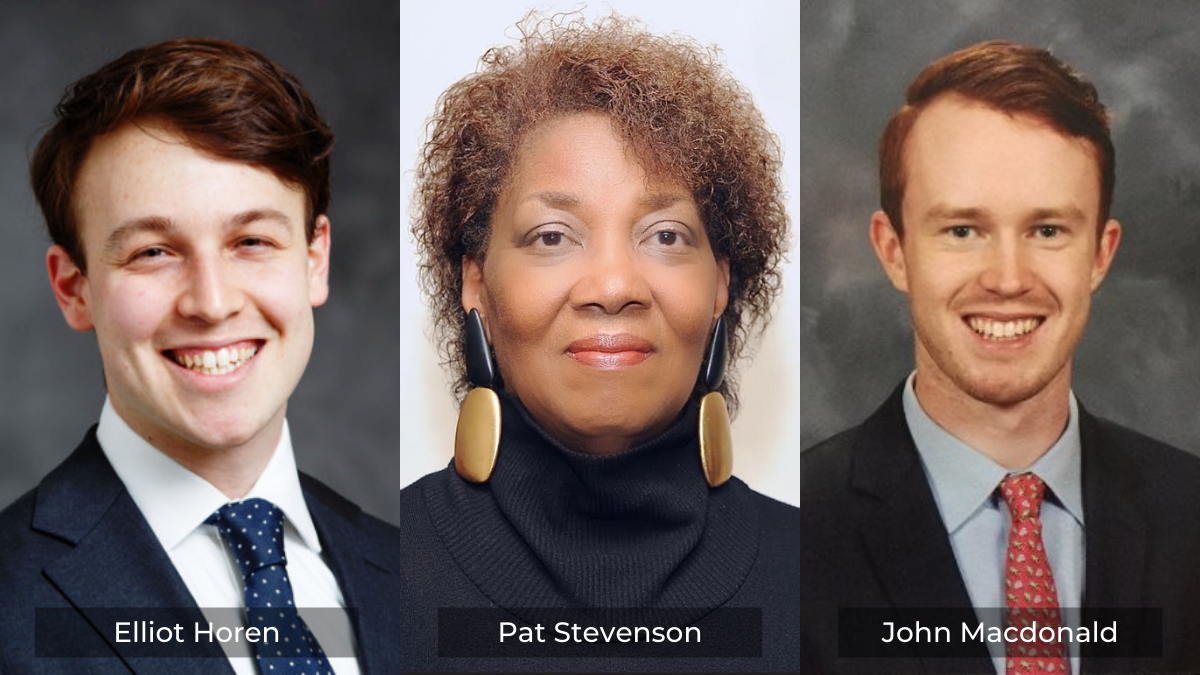Harlem Community News has long been a mainstay in its part of New York City, publishing the latest local news and alerting residents about upcoming events.
But when the pandemic hit, the free newspaper’s only revenue stream quickly dried up. Within a few weeks in March 2020, it lost $100,000 in earnings as advertisers fled, according to Pat Stevenson, who has been the publisher for more than two decades.
Then she got a call from an organization called NYPACE asking if she needed their help, “I’m like, are you kidding?” Stevenson said.
NYPACE is a New York City-based non-profit that connects entrepreneurs of color like Stevenson with volunteer advisors from some of the most prestigious consulting and financial firms in the city. Founded in 2002, NYPACE works with entrepreneurs in underserved neighborhoods that often don’t have access to the resources and tools that small businesses require to grow.
Only half of all small businesses make it to the five-year mark, according to JPMorgan Chase. When mentoring is provided, though, 70% pass that milestone. Most mentoring programs involve either classroom-based teaching or one-on-one coaching. NYPACE is different. Over an eight-week period, small teams of two to three advisers work closely with the entrepreneurs on their most urgent challenges, whether it’s reducing costs or building revenues or marketing a new product. The goal is to leave them with a sustainable business model and a better understanding of their true operating costs.
Ken Inadomi, NYPACE’s Executive Director, estimates that there are more than 200,000 small businesses in New York City. Of those, roughly 40,000 to 50,000 are minority owned—ranging from plumbing companies to barbershops to dance studios.
“Our businesses are all neighborhood-based. So as they grow, and as they can increase profits, they can then hire and create jobs within the community: neighborhood-based, local jobs. In a lot of ways I look at NYPACE really as a job-creation organization.”
In Stevenson’s case, two NYPACE volunteer advisers, John Macdonald and Elliot Horen, were tapped in May of last year to help her bridge the gap between the start of the pandemic and the end of it, when (hopefully) previous Harlem Community News advertisers would return to the fold. While the advertising drop off rippled across the media industry as COVID grew, Horen and Macdonald believed Stevenson was uniquely positioned to survive it.
“We weren’t just in the world of COVID. For Pat, we were also in what I would consider a modern-day civil rights movement in a highly contentious economic and political climate,” Macdonald said. “Pat, as a Black woman business owner, was really at the confluence of all of these different national and global crises.”
Horen and Macdonald, a consultant at Ernst & Young and a private equity associate at L Catterton, respectively, dug into market research and conferred with Stevenson on a weekly basis. Ultimately, the advisers zeroed in on the loyalty of Stevenson’s readership. They launched a voluntary subscription-based service for Harlem Community News alongside a campaign to commemorate her long tenure as publisher.
“That summer was Pat’s 25th anniversary as a publisher of her newspaper—an incredibly big milestone to hit,” Macdonald said. “We wanted to make sure that we were capturing the benefit of that.” Sticking to its ethos, the paper would still be free to those who wanted it, but those willing to pay a small sum would get a PDF version emailed to their inbox.
“In order to do it, I had to connect with all my old customers and basically say, ‘I’m still here and still publishing.’ And because I did that, people came and congratulated me and they bought ads,” Stevenson said. Within a week, the effort pulled in $13,000. “It really sort of got me out of the pandemic funk.”
It wasn’t the first time that volunteers from NYPACE have worked with Stevenson to help her ride through a crisis.
Back in March 2018, Stevenson knew she had a problem. Like much of the legacy media, she was fighting to adapt her community newspaper to an increasingly online world. Stevenson, who is in her 60s, joked that she was resistant to learning anything new—social media was uncharted territory. But she knew that doing nothing wasn’t an option. She needed to tap a new stream of revenue.
NYPACE volunteers helped her revamp her media kit and set up a website. Then, they guided her foray into the world of Google Analytics and social media, building out her online presence and laying the groundwork to attract new advertisers.
For a while, it worked. Until COVID hit two years later. Stevenson is emblematic of how the pandemic has threatened small businesses across the country and shuttered many of them. NYPACE has been busy during the pandemic. Last year, it worked with 57 companies. This year, it is on track to aid 75.
“I think a big part of our role (with Stevenson) was not just giving advice, but learning about her business and listening to what she was experiencing,” Horen said. “She was one example of what was happening across the city, which is a mass displacement of people and income and a really challenging situation faced by business owners everywhere.”
But he added, “This is not a story about the transformative work that John and I did in eight weeks. We certainly provided value, but in my mind, the real champion and icon here is Pat, who has, over the course of years, built and sustained a news organization that she has every right to be proud of and is beloved by her community.”
This is a Contributor Post. Opinions expressed here are opinions of the Contributor. Influencive does not endorse or review brands mentioned; does not and cannot investigate relationships with brands, products, and people mentioned and is up to the Contributor to disclose. Contributors, amongst other accounts and articles may be professional fee-based.

